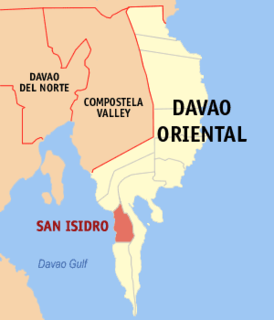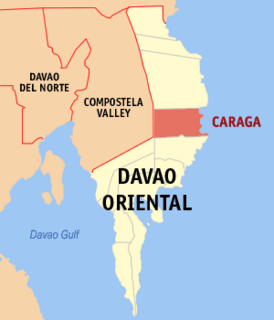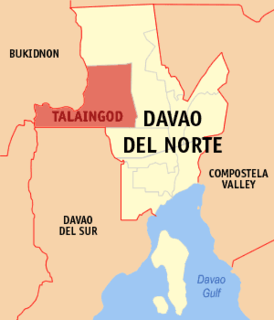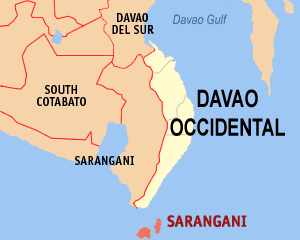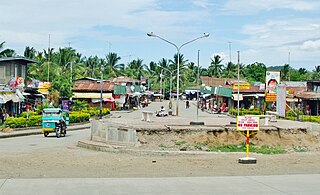Banaybanay | |
|---|---|
| Municipality of Banaybanay | |
 Map of Davao Oriental with Banaybanay highlighted | |
Location within the Philippines | |
| Coordinates: 6°58′12″N126°00′45″E / 6.969936°N 126.012575°E Coordinates: 6°58′12″N126°00′45″E / 6.969936°N 126.012575°E | |
| Country | |
| Region | Davao Region (Region XI) |
| Province | Davao Oriental |
| District | 2nd District |
| Barangays | 14 (see Barangays) |
| Government | |
| • Type | Sangguniang Bayan |
| • Mayor | Adalia L. Tambuang |
| • Vice Mayor | Jose Amor C. Bagayas |
| • Congressman | Joel Mayo Z. Almario |
| • Electorate | 28,673 voters (2019) |
| Area | |
| • Total | 408.52 km2 (157.73 sq mi) |
| Population (2015 census) [3] | |
| • Total | 41,117 |
| • Density | 100/km2 (260/sq mi) |
| Economy | |
| • Income class | 2nd municipal income class |
| • Poverty incidence | 28.72% (2015) [4] |
| • Revenue (₱) | 140,630,536.63 (2016) |
| Time zone | UTC+8 (PST) |
| ZIP code | 8208 |
| PSGC | |
| IDD : area code | +63 (0)87 |
| Climate type | tropical rainforest climate |
| Native languages | Davawenyo Surigaonon Cebuano Kalagan language Kamayo Tagalog |
| Website | banaybanay |
Banaybanay, officially the Municipality of Banaybanay, is a 2nd class municipality in the Province of Davao Oriental, Philippines. According to the 2015 census, it has a population of 41,117 people. [3]

Davao Oriental is a province in the Philippines located in the Davao Region in Mindanao. Its capital is Mati, and it borders the province of Compostela Valley to the west, and Agusan del Sur and Surigao del Sur to the north. The province is the traditional homeland of the Mandaya and Kagan people.

The Philippines, officially the Republic of the Philippines, is an archipelagic country in Southeast Asia. Situated in the western Pacific Ocean, it consists of about 7,641 islands that are broadly categorized under three main geographical divisions from north to south: Luzon, Visayas and Mindanao. The capital city of the Philippines is Manila and the most populous city is Quezon City, both part of Metro Manila. Bounded by the South China Sea on the west, the Philippine Sea on the east and the Celebes Sea on the southwest, the Philippines shares maritime borders with Taiwan to the north, Japan to the northeast, Vietnam to the west, Palau to the east, and Malaysia and Indonesia to the south.


